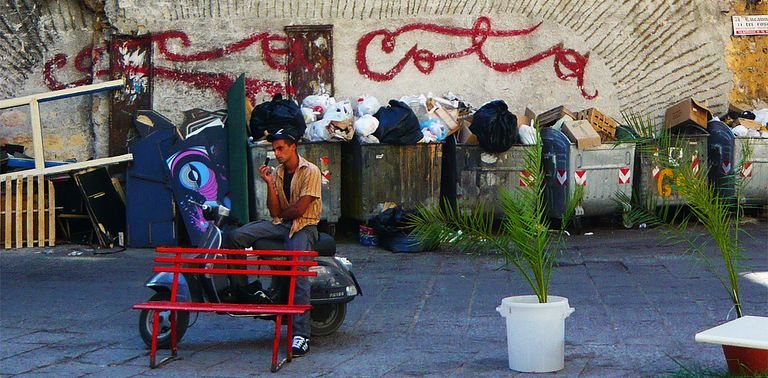Pilgrimage to the Eternal City
Pilgrimage to the Eternal City
Gama Harjono , Contributor , Jakarta | Sun, 03/23/2008 3:05 PM | Travel
The Eternal City of Rome has been an important city and sacred place since ancient times.
Interestingly, the oldest Roman catholic edifice, the paleo-Christian Pantheon, was originally a pagan temple commissioned to the architect Agrippa by Emperor Adriano in 27 A.C., and only later, in the 7th century, consecrated into a church.
The harmonious circular-shaped edifice now houses the tombs of the kings of Italy, as well as that of Raphael.
The brilliance of Rome's catholic churches continues to awe pilgrims. By tradition, however, there are four significant churches in Rome -- also known as the four patriarchal basilicas -- that are essential to a Catholic pilgrimage.
The basilica of St. John Lateran
Across the Italian capital -- at the opposite end from the Vatican -- is Rome's official cathedral, the West's oldest basilica, the foundation of which was laid by Emperor Constantine I in 324. It was thus the ecclesiastical seat of the bishop of Rome (a role assumed by the Pope) until 1309, before the status was granted to St. Peter's basilica upon the Pope's return from Avignon.
The basilica of St John Lateran, dedicated to Christ (therefore its official name is Archibasilica Sanctissimi Salvatori, the Arcihbasilica of the Most Holy Savior), ranks as the most important in the peninsula and contains the papal throne.
The basilica's main facade, in a baroque style, is often said to have been designed as that of a royal palace, not of a church. In the square of the same name, the world's tallest existent obelisk stands. The piazza now hosts the First of May concert with some of the biggest names in Italy's music industry partaking in the annual televised show.
The basilica of St. Peter
More than a just a church, St. Peter's basilica is effectively the mightiest (the second largest by area after the basilica of Our Lord of the Peace in the Ivory Coast) catholic structure on the planet.
At the very heart of Christendom, it predominates the tiny territory of the Vatican city while its royal crown dome has been a feature of Rome's skyline since the late 16th century.
Inside the basilica, among the innumerable artworks and underneath Bernini's phenomenally tall baldachin, is what's believed to be the tomb of St. Peter. Another addition, since April 2005, is the tomb of Pope John Paul II.
A feature of the catholic cathedral is the cupola, which is open to visitors to climb up. The dome, which is 135 metres tall, treats visitors to an astounding view over the Eternal City.
One cannot help but admire the sumptuous basilica, which, in spite of the busy traffic in the surroundings, is a holy site for the Church of Rome. It is also believed to be the burial place of St. Peter, the first pope of Christianity, following his crucifixion.
The monumental St. Peter's square embraces visitors with "open arms" as they walk through the pair of elliptical colonnades, ingeniously designed by Bernini. The square also features an Egyptian obelisk brought to Rome in 37 A.D., the only obelisk in Rome that has not been removed from its original position since Imperial times.
The basilica of St. Paul
Owing to its location -- outside Rome's fortified walls -- this basilica may be lesser known. But the story of the UNESCO-listed world heritage basilica is more involved than its location.
In the 4th century, the foundation was laid upon what is believed to the site of St. Paul's martyrdom, a process by the awful means of decapitation.
This church suffered terrible damage due to pillaging and natural causes and was restored and repaired throughout the Middle Ages up to the 19th century. However, a graceful 13th-century cloister survived the years.
Curiously, a sarcophagus was discovered beneath the altar a couple of years back during an archaeological excavation.
The basilica of St. Mary Major
Within a 15-minute stroll of Italy's busiest transportation hub, the station of Termini, sits one of Rome's gems, the basilica of Santa Maria Maggiore.
The basilica's undulating two-tiered baroque facade on one side, and its twin copper cupolas, keep the eye constantly moving.
Peering inside, visitors are awed by a 5th century Byzantine mosaic that recounts stories from the old and new testaments, or alternatively, one can take a tour of the tombs of different popes.
The basilica, dedicated to Mary, was constructed between 432-440 by Pope Sisto III, and since 1377 its belfry has been the tallest in Rome.
The tradition of celebrating the miracle of the snow falling is derived from the legend of Pope Liberio's dream in which the Virgin Mary appeared, only to tell him of snow miraculously falling unseasonably in August. The "Madonna della Neve," during which a cascade of white petals falls from the ceiling of the basilica, is celebrated on Aug. 5.

0 comments:
Posta un commento